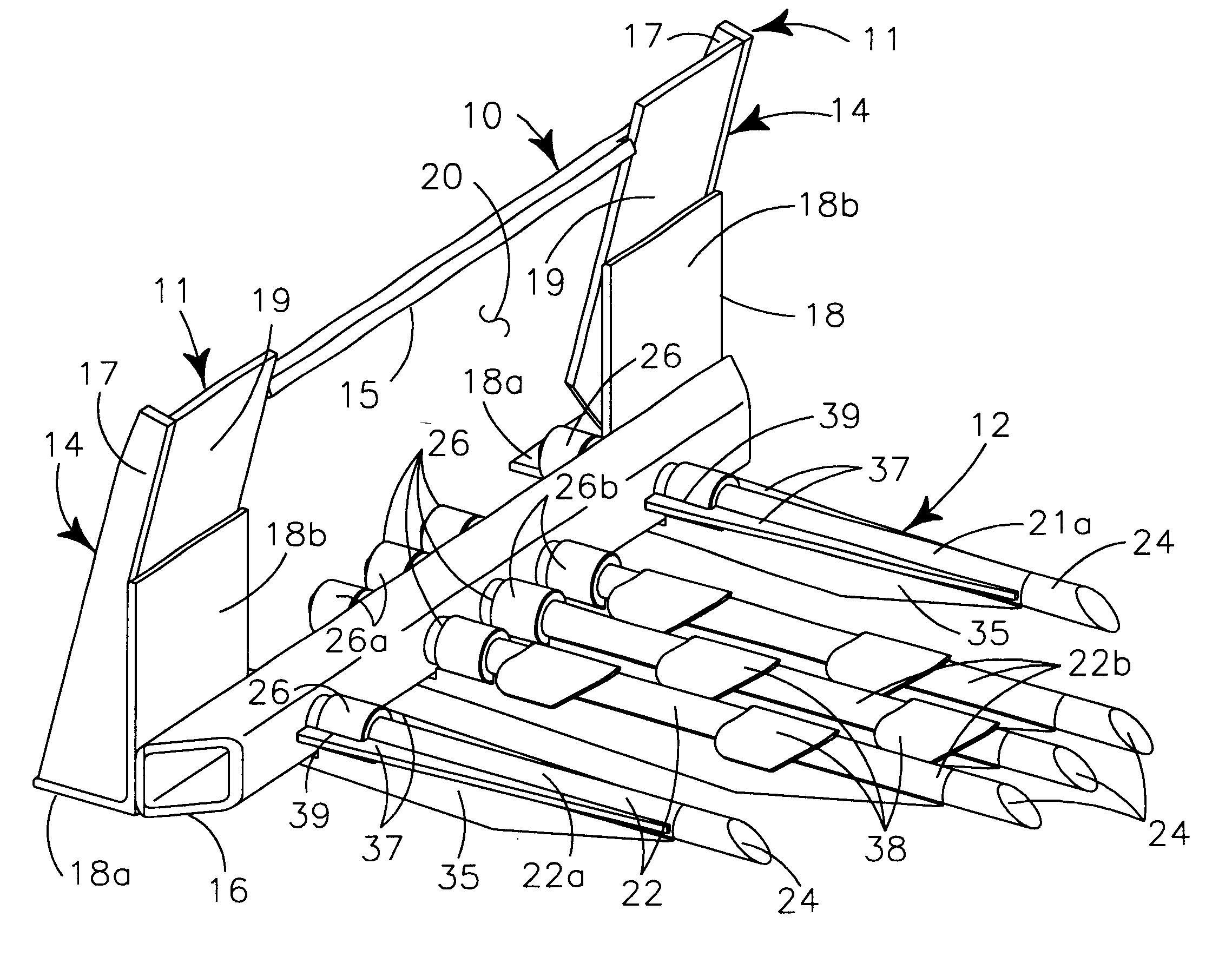Tine structure for bare root tree and stump extracting tool
a technology for removing stumps and trees, applied in the field of tools for removing arborescent materials, can solve the problems of damage or destruction, damage to the overall biological system of the removed plant, and the traditional digging tools of mechanical earth moving equipment such as buckets, shovels and the like are not particularly effective in plant extraction, etc., and achieves substantial rigidity and strength of connection, simple and easy fastening and release of tines
- Summary
- Abstract
- Description
- Claims
- Application Information
AI Technical Summary
Benefits of technology
Problems solved by technology
Method used
Image
Examples
Embodiment Construction
Referring to FIGS. 1 and 2, it is seen that the tool generally provides frame 10 carrying connection structure 11, for interconnection with the tool connection plate of powering vehicle 13, and extracting structure 12 extending forwardly from the frame.
Frame 10 provides similar sides 14 interconnected in their upper portions by upper horizontal beam 15 and in their lowermost portions by lower tine beam 16. Both upper horizontal beam 15 and lower tine beam 16 are box-type beams with the tine beam having a larger cross-sectional size to provide appropriate strength and rigidity and a configuration adaptable to allow interconnection of tines therein. The sides 14 are mirror images of each other, each formed by vertical planar side plate 17 structurally carried by L-shaped angled bottom element 18 having lowermost bottom plate 18a and upstanding fastening arm 18b configured to structurally interconnect with the lower forward facing edge of the adjacent side 17. The fastening arm 18b has...
PUM
 Login to View More
Login to View More Abstract
Description
Claims
Application Information
 Login to View More
Login to View More - R&D
- Intellectual Property
- Life Sciences
- Materials
- Tech Scout
- Unparalleled Data Quality
- Higher Quality Content
- 60% Fewer Hallucinations
Browse by: Latest US Patents, China's latest patents, Technical Efficacy Thesaurus, Application Domain, Technology Topic, Popular Technical Reports.
© 2025 PatSnap. All rights reserved.Legal|Privacy policy|Modern Slavery Act Transparency Statement|Sitemap|About US| Contact US: help@patsnap.com



